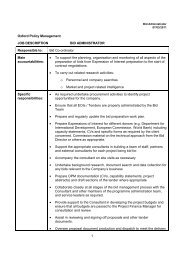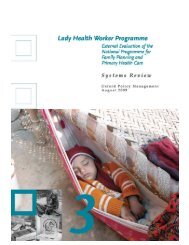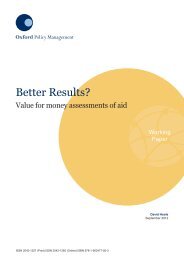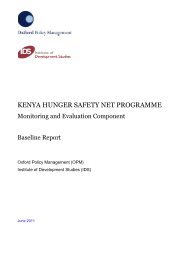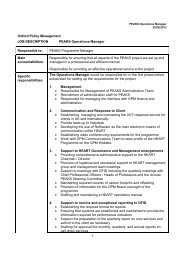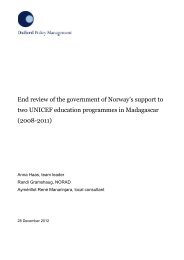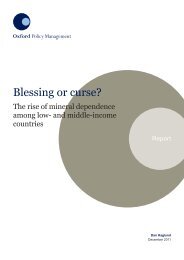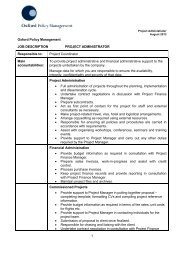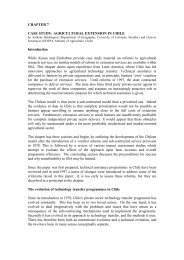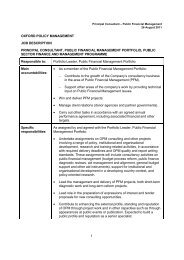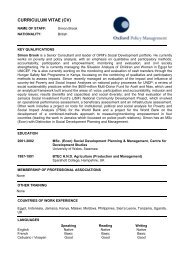LHW Management Review - Oxford Policy Management
LHW Management Review - Oxford Policy Management
LHW Management Review - Oxford Policy Management
Create successful ePaper yourself
Turn your PDF publications into a flip-book with our unique Google optimized e-Paper software.
Strategic and management controls<br />
4 Strategic and management controls<br />
Key question: Do the management controls of the Programme support the<br />
implementation of the Strategic Plan and PC-1?<br />
4.1 Introduction<br />
The Programme provides an important health service to the poor communities of Pakistan.<br />
Over the past 15 years, the Programme has improved health indicators and increased its<br />
coverage.<br />
To continue to fulfil its purpose, it needs to have the necessary strategic and management<br />
control over its future direction, its policies, and its performance and quality standards. For<br />
the period under review, these controls are outlined in the Strategic Plan (2003–11) and the<br />
PC-1 (2003–08).<br />
A judgement of governance failure to drive key strategic initiatives, and management failure<br />
to implement Phase 2 of the PC-1 was given in Chapter 3. Examples were provided from<br />
evaluation findings of non-compliance with some key policies, and non-implementation of<br />
initiatives that were designed to implement the agreed strategic directions.<br />
This chapter describes the core control mechanisms, the operation of which should have<br />
supported full implementation of the Strategic Plan and PC-1.<br />
4.2 Description of controls<br />
The functions and committees described in the next sub-section are to provide the<br />
Programme with the level of strategic and management control necessary to provide<br />
direction, ensure compliance, mitigate the risk of corruption, manage service delivery, and<br />
strengthen the Programme’s capability for ongoing development.<br />
The Programme is monitored by: the Secretary of Health (and, through him, the Director<br />
General, Health Services and the Deputy Director General of Health and Planning and<br />
Development), the Planning Commission and the Ministry of Finance. 19 The Programme is<br />
also subject to external audit by the Auditor General, and there is provision for an audit<br />
officer to be posted at the FPIU from the Auditor General’s office in order to provide<br />
continuous internal audit.<br />
The PC-1 also specified that there be progress reports that would be prepared by expert<br />
agencies and reviewed by the provincial and federal Health <strong>Management</strong> Committees.<br />
These reports would aim to review progress against targets, and evaluate the effectiveness<br />
of the strategy. They would be in addition to the two external evaluations planned for 2005<br />
and 2008.<br />
In addition, the Programme has two high-level cross-sectoral committees, the Programme<br />
<strong>Review</strong> Committee and the Inter-Provincial Committee on Decentralisation. 20<br />
19<br />
The day-to-day interface of the Programme with the Ministry of Health is with the Director General of Health Services.<br />
20<br />
There are a number of oversight and coordinating committees specified in the PC-1. The establishment of such committees<br />
is very typical of how the Public Service operates in Pakistan. Committees can provide a way to facilitate decision-making and<br />
action within the framework of the bureaucracy. Their role is to:<br />
improve collaboration between the Ministry of Health and the federal level of government, and the Departments of Health and<br />
provincial level of government; to improve decision-making and policy development; and<br />
15



